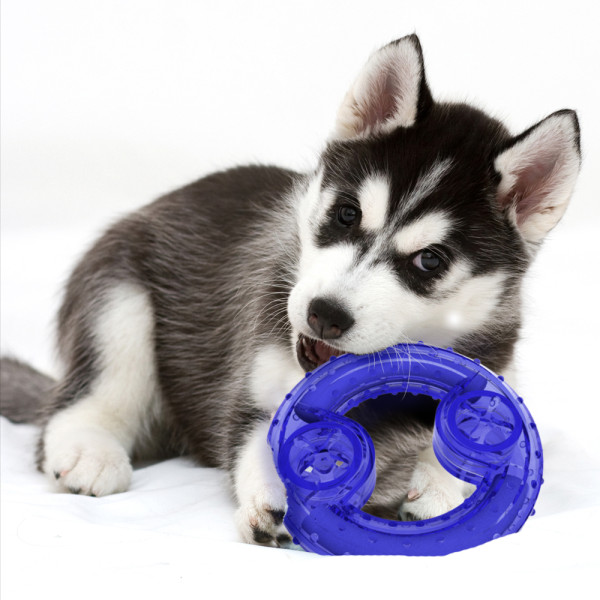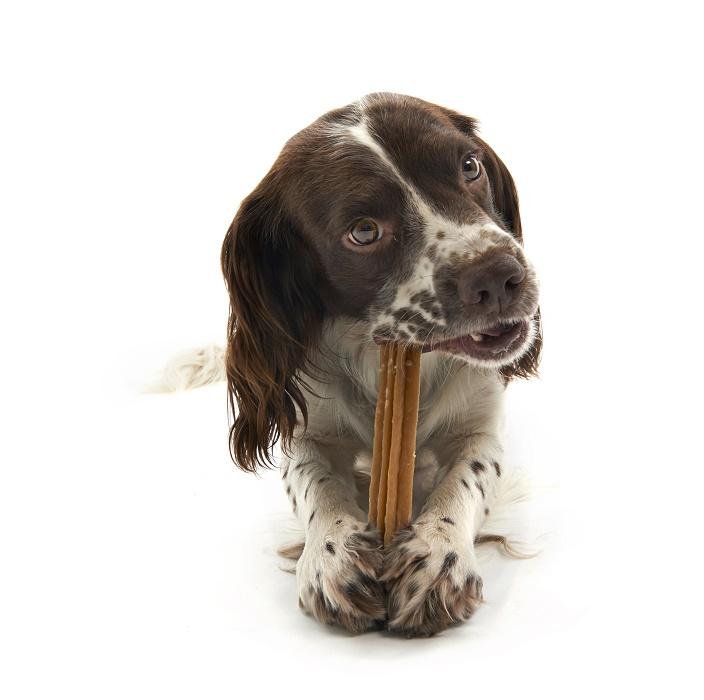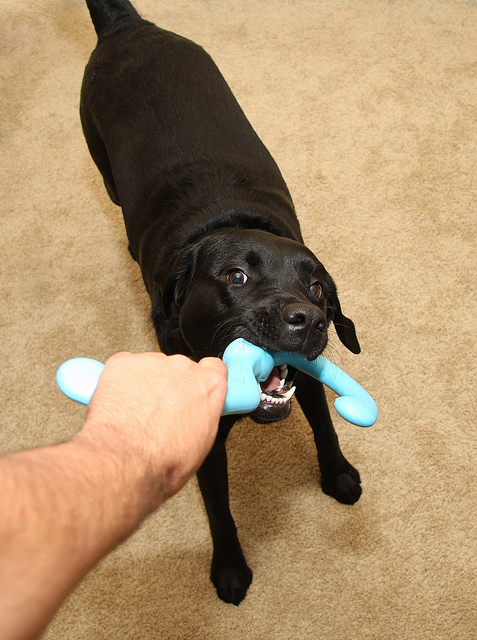Wondering if you can teach your dog to chew on his toys and not your stuff? Well you can! It’s not a quick process, but if you are persistent and consistent with your training, you can get your dog interested in chewing on toys.
Two Types of “Non-chewers”
There are two types of dogs that do not chew on their toys. The first group are the worst. They chew on everything but the toys you buy them. The second group are just not interested in chewing much of anything. Although you may think the latter is great, it can be a nuisance if you want to keep your dog busy (can’t buy him something to chew on, he won’t) and his teeth aren’t getting cleaned as well as they should since he never chews on anything.
Depending on the type of dog you have, there are several things you can do to get him chewing on dog toys and treats.
Chews Everything Else
This is the dog that most people have and find just plain frustrating. You buy him toys, he chews on your shoes. Whether it’s a puppy who hasn’t learned better or an older dog that has gotten away with it for years, you can fix this problem.
1. Dog Proof
First thing you are going to do is remove anything at dog level that he might chew while you are training him. You don’t want your dog to keep practicing this self-rewarding behavior.
2. Give him Options
Then, buy him several types of toys that encourage chewing. Things like stuffed animals and balls are not really meant for chewing and probably won’t be anything exciting to your dog.
Below are some suggestions to try. Always buy a few different types to see which one (if any) your dog likes.
Non-edibles
- Rope bones (flavored help encourage chewing)
- Flavored rubber bones
- Puppy teething toys (freezable!)
- Nylon bones, such as Nylabone (ask your vet about these and their risks. Some brands are safer than others)

Edibles
- Bully sticks
- Whimzees brand dental chews
- Salmon skin bones (great for dogs with protein sensitives)

You don’t want to give him five chew toys all at once. Try them one at a time. Leave him with just that (no other toy or bed he can chew) and see if he starts to use it, or at least show some interest. If he does, praise him and tell him he is a good boy!
3. Keep them Handy
You want to keep an appropriate chewy available to you at all times, as well as to him. So you will have one somewhere you can reach and then leave another one (preferably a different kind) on the floor for him to pick up whenever he has the urge to chew.
4. Praise
When you see your dog pick up something appropriate, praise him! We did this with our puppy and we only had one casualty, which was our fault (left puppy unattended in a room with a leather wallet on the floor and nothing else to do).
5. Swap
If your dog picks up something inappropriate, simply swap it out with the item you have handy (either the one on the floor if it’s nearby or the one you were keeping out of reach). This teaches your dog two things: one, what I can and cannot chew on; and two, if I pick up something that is not mine, and I bring it to you (instead of chewing on it or running away), you give me something better. Dog’s like these rules and it will keep your stuff nice. I am notorious for leaving socks everywhere. But my handy little pup rounds them up for me and brings them to me, unscathed, in exchange for a treat. It’s a good mental exercise for him too!
Just make sure that no one is your house is letting your dog chew on things you don’t want, this will derail your training.
Non-Chewers
For those that won’t chew on anything (or if the above dog still won’t pick up any of those items) you have a few options.
Make the toys more enticing! This is why the Kong® was invented; to get dogs to interact with a toy and keep them occupied on something other than destroying your home (or just sitting around and sleeping all day). Don’t think you have to use a Kong, they make all kinds of stuffable toys—from bones and balls to tug toys, so chose the ones you think your dog will be most likely to play with.
Aside from toys that you stuff with food, you can also spice up regular toys by:
- Spreading peanut butter or cream cheese on a rope or rubber bone
- Soaking a freezable toy in some type of broth first
- Sprinkle catnip on a toy (my dog loves it!)
- Playing with your dog and the toy can encourage biting/grabbing of the toy. Praise your dog when he interacts with the toy.

Be sure to praise your dog when he is chewing on something he should be, so he knows he is doing the right thing. It’s possible that your rescue dog was corrected for chewing on things previously and therefore is nervous about picking up anything, even if it looks and smells like a dog toy.
